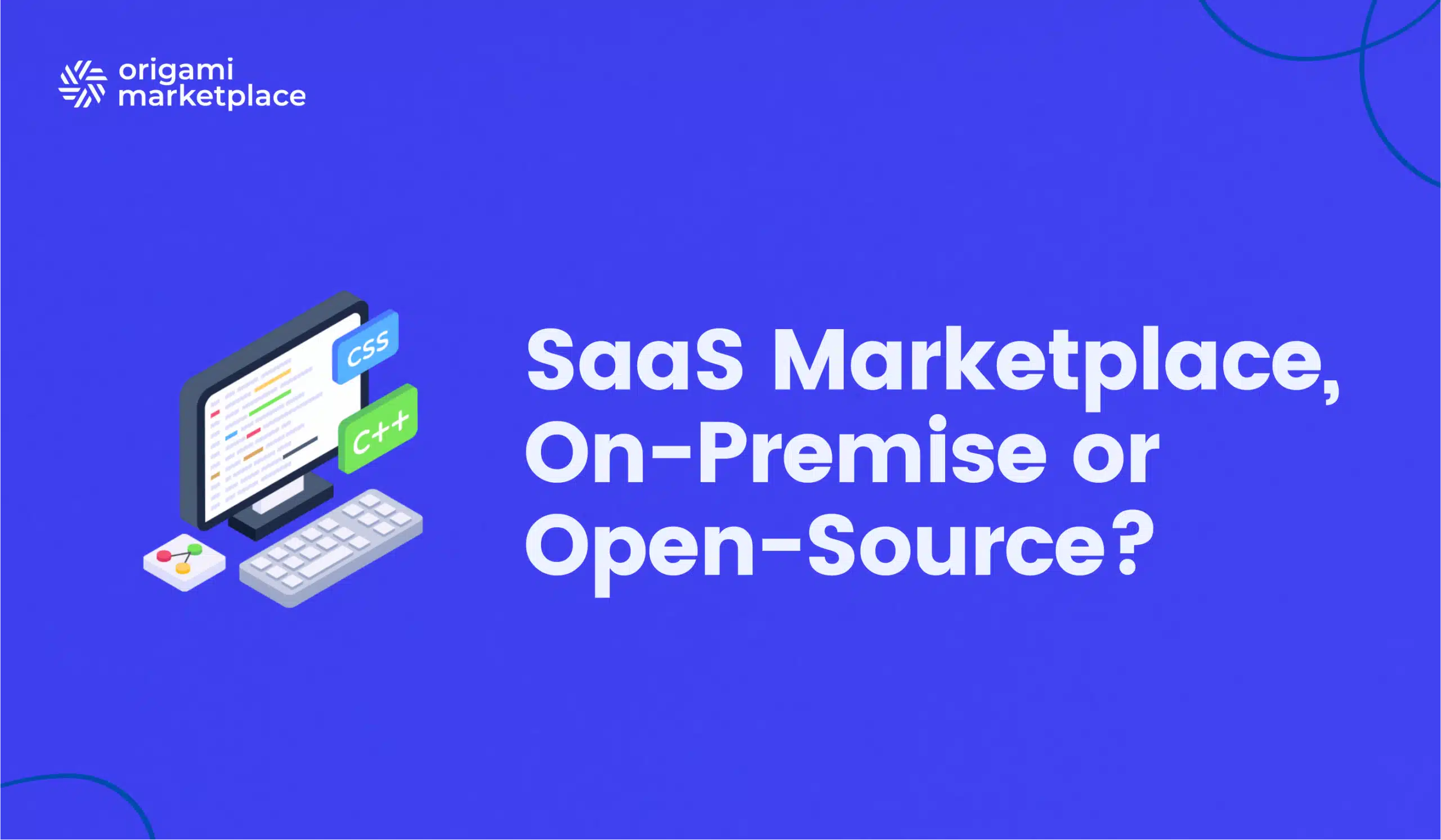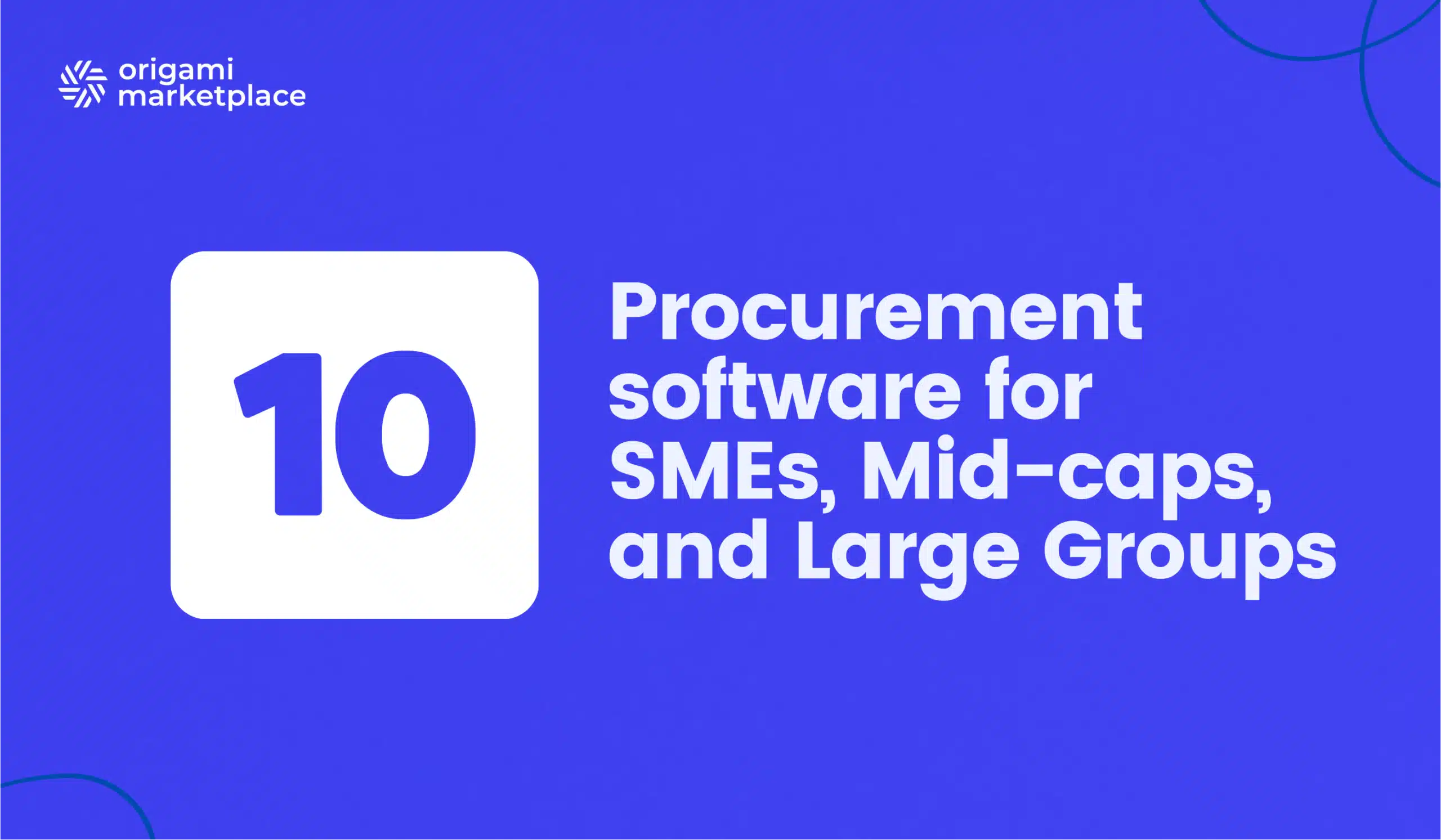Comparative guide: Creating a SaaS, On-Premise, or Open-Source Marketplace
- Arnaud
- 7 minutes reading

Today, launching an online store has become child’s play thanks to SaaS solutions dedicated to e-commerce. But when it comes to creating a marketplace, it’s a whole different story.
Wondering why? Unlike traditional e-commerce, where the interaction is simple between merchant and customer, a marketplace is more complex. It operates with three players: the operator, the seller, and the buyer. This structure leads to centralized management of payments and shipping costs, which vary according to the sellers. Moreover, the operator must be able to choose among various revenue models, such as subscriptions, commissions, or registration fees. The robustness of the technological solution you choose will be the cornerstone of your success.
Are you hesitating between a SaaS solution and a proprietary solution? This choice must consider implementation time, your internal resources, flexibility, budget, and even the need to adopt a new language!
Essential points to consider for developing a marketplace:
- The three main marketplace models (SaaS, On-Premise, Open-Source)
- A. SaaS Marketplace (Software as a Service)
- B. On-Premise Marketplace (Proprietary / Open Source)
- C. Marketplace via Open-Source CMS
- How much does it cost to develop a marketplace?
- What initial budget to allocate to the technical launch of a marketplace (Excluding associated costs)?
- What Recurring Budget to Operate a Marketplace?
- Human resources management in a marketplace
- Comparison table of solutions for creating a marketplace
👋 No time to read the whole article? Find the summary here.
1. The three main marketplace models (SaaS, On-Premise, Open-Source)
Creating a marketplace requires choosing between three types of solutions: SaaS, On-Premise, or Open Source. Let’s explore the advantages and disadvantages of each to help you make the right choice.
[A] SaaS Marketplace (Software as a Service)
With a SaaS solution, everything is ready to use via the cloud. Here’s why it’s appealing:
Advantages:
Quick and Efficient Setup: One of the major strengths of SaaS solutions is their ability to allow a rapid launch of your marketplace, unlike custom development which can extend over several months. They offer a plug-and-play approach, supported by an intuitive interface facilitating the configuration and management of your platform.
Reduction of Initial Costs: Opting for a SaaS solution, like the one offered by Origami Marketplace, significantly reduces initial costs. You generally pay a monthly or annual subscription, encompassing access to the platform, updates, maintenance, and hosting fees, thus allowing increased control over operational costs.
Scalability and Flexibility: SaaS solutions offer a wide range of features and customization options, allowing you to adjust your marketplace as it evolves.
Advice and Support: SaaS solutions offer comprehensive support from A to Z throughout the different phases of the project. They also stand out for their ability to offer sound advice and practical tips to help you achieve your goals. The advisory aspect is just as crucial as the technical dimension.
Regular Updates and Continuous Improvements: SaaS solution providers are attentive to market needs, bringing updates to optimize performance, security, and introduce new features.
Security and Compliance: SaaS solution providers integrate advanced security measures and often comply with strict security and privacy standards, essential for gaining user trust.
Ease of Use and Powerful Partners: SaaS solution providers integrate specific plugins connected with a network of powerful technical partners.
Disadvantages:
You Are More of a Tenant Than an Owner of the Solution: One of the major drawbacks of a SaaS solution is that it is associated with a recurring cost. It’s important to note that this tends to decrease over time.
Risk of the SaaS Provider Ceasing Operations: Opting for a SaaS solution provider can entail this risk, as has happened recently. Rest assured, at Origami Marketplace, for example, we have taken measures to protect our users by incorporating preventive provisions into the contract to avoid any disruption to your business. Of course, we are far from the end of our adventure, as evidenced by our latest news: fundraising, recruitments, tool overhaul, and the support of many major commerce players.
[B] On-Premise Marketplace (Proprietary / Open Source)
An On-Premise Marketplace developer installs the software on your servers with an associated license, often developed from open-source frameworks like Symfony, Laravel, or open-source CMS like Prestashop, Shopify, Magento, or even WooCommerce.
Advantages:
- Ownership Rights: One of the major assets is the absence of recurring subscription or commission fees, total customization, support, and ease of takeover by another provider depending on the quality of the code. If you face this situation, it’s preferable to have the current code evaluated by your next provider to avoid a technical dead end that could be detrimental to your business.
Disadvantages:
Potentially High Initial Cost and Hosting and Maintenance Fees: Although generally less expensive than a SaaS subscription in terms of hosting and maintenance fees, the initial cost and required investment can represent a significant risk for your business. It’s a gamble that deserves careful evaluation. To avoid a bad investment, ensure you have thoroughly studied the market and verified that a real demand exists in your sector. If in doubt, it’s preferable to initially favor the SaaS solution provider to limit investment.
Updates: A notable drawback of Open Source solutions lies in the complexity of post-purchase maintenance. Moreover, the need to have in-house developers to ensure maintenance and subsequent updates can be a significant requirement for the organization.
[C] Marketplace via Open-Source CMS
Although there are no open-source CMS dedicated to marketplaces, some multi-vendor plugins available for e-commerce CMS such as Prestashop or WordPress allow you to achieve functionality similar to that of a basic marketplace. However, the customer experience might not be optimal, which can affect your revenue. Nevertheless, this could be an excellent test if you have internal resources to conduct the experiment.
Advantage:
- Reduced Ownership Cost: One of the major assets is the total absence of recurring subscription or commission fees.
Disadvantage:
- Quality of Customer Experience and Scalability: Although it may be tempting to experiment with this type of development in-house, your marketplace risks resembling a makeshift site that will not inspire confidence in your potential customers. Moreover, in case of a major update of the CMS or technology used, an almost total overhaul will probably be necessary.
As you have just read, each of these models presents unique advantages and disadvantages. Only an analysis of your needs, your internal capabilities, and the specifics of your project will help you identify the most suitable solution to develop your own marketplace. If you need a solid foundation to identify your needs, we recommend drafting a specifications document that will group all your requirements and the functionalities necessary for your marketplace.
Download our free marketplace specifications template.
Here you will find all the essential features to succeed in your multi-vendor marketplace. This model provides a simple backlog to guide you through each step of your project.

2. How much does it cost to develop a marketplace?
Launching your own marketplace is an ambitious project that requires careful financial planning. The cost of developing a marketplace can vary considerably, ranging from €15,000 to €500,000, depending on various factors such as the technology and programming language used, the industry sector, hiring in-house developers, or outsourcing to a SaaS solution provider.
For the success of your project, it is crucial to establish a precise budget over the next two years and seek funding, whether personal contributions or external, to ensure the success of your marketplace. The major costs associated with developing the marketplace include platform design, hosting, necessary technical partners, and a marketing budget to attract your first sellers and buyers.
If you have programming skills and time, you can reduce some costs by managing, for example, the front-end of your marketplace yourself. Otherwise, full outsourcing to a provider and an integration agency is a common option.
3. What initial budget to allocate to the technical launch of a marketplace (Excluding associated costs)?
Budget under €30,000: It would be wise to opt for an open-source CMS, relying on your own developers. You can also consider approaching a SaaS solution provider, who could offer you the development of a marketplace with a range of modules and basic functionalities that could largely meet your expectations.
Budget between €50,000 and €250,000: Collaborating with a web agency could be a feasible option for an On-Premise marketplace. However, be cautious, as the agency might not consider the long term. In case of a change, this choice could require a new budget allocation and a temporary shutdown of your marketplace for maintenance.
With a similar budget, although in-house development of your own solution may seem attractive to achieve savings over time, SaaS solution providers remain the best option. They have already developed many modules and features for their other clients and have proven back offices that continuously improve. They can also support you with specific and custom developments that will be added to their basic SaaS offer.
SaaS solution providers, like Origami Marketplace, offer the advantage of being able to test a new market quickly without requiring a heavy initial investment. Moreover, they allow you to avoid intensive HR management necessary to keep your marketplace sophisticated, secure, and high-performing, which would be the case if you developed in-house.
4. What recurring budget to operate a marketplace?
Creating a marketplace generates initial costs, but it’s also important to consider the recurring costs associated with its operation and maintenance. These include, for example, fees related to the use of the solution, whether SaaS or On-Premise according to the provider’s license, or fees associated with payment service providers (PSPs).
Other recurring expenses comprise subscription, maintenance, and hosting. It’s prudent to anticipate these fees, which are significant. SaaS solutions may seem more expensive in terms of usage fees because their economic model often relies on commissions and/or subscriptions, but they have often negotiated agreements with many pre-integrated partners and providers (like PSPs) that can help you make significant savings, and they also offer support that would be charged additionally in other solutions.
On the other hand, On-Premise or Open-Source marketplace platforms generate ongoing costs of a different nature, such as maintenance and hosting, although these costs can also be less apparent in the subscription pricing of SaaS solutions.

Ensure your success today. Take advantage of our free configurator to define the main lines of your project and discuss with one of our experts for a personalized study.
5. Human resources management in a marketplace
The management of human resources is a crucial factor for the proper functioning of a marketplace, especially during its implementation. This involves several essential tasks such as supplier sourcing or integrating sellers into your marketplace, requiring expertise and good organization. There will also be ongoing monitoring and support management to plan for. This may require human resources that need to be included in your overall project.
Moreover, developing a marketplace, even with a well-defined specifications document, demands significant time for training internal teams, interactions with the provider or the development team, acceptance phases, and tests before it goes live. It’s generally recommended to have at least two or three full-time people to manage these different stages of the project.
If this organization seems complex to implement, it would be wise to opt for a SaaS solution offering expertise that will save you time, although this will incur an additional cost.
6. Comparison table of solutions for creating a marketplace:
Wondering which solution is best for creating your marketplace? We’ve compiled a comparison table to help you see more clearly. Whether you’re attracted by the simplicity of SaaS solutions, the customization of On-Premise options, or the economy of Open-Source solutions, this table highlights the advantages and disadvantages of each model. Take a few minutes to explore the key differences and choose the solution that best suits your needs and ambitions:
| Comparative guide: | SaaS Solution | On-Premise | Open Source |
|---|---|---|---|
| Development timeframe | 3 to 4 months | 12 to 24 months | 9 to 15 months |
| Internal skills | No need for technical knowledge internally. You delegate all development, hosting, management, and updates. However, you should plan for a project manager who will be in charge of managing the SaaS solution provider. | No need for technical knowledge internally. You delegate all development, hosting, management, and updates. However, you should plan for a project manager who will be in charge of managing the selected agency. | Internal technical skills are necessary. It's important to build a team and organize continuous training to keep your marketplace compliant with security standards and regulations. The management of hosting, management, and updates will be your responsibility. |
| Setup Cost | From €30,000 | From €150,000 | From €5,000 |
| Additional costs | SaaS solution providers may charge a monthly license for access and use of their platform, commissions, KYC subscription, hosting, and custom module development. | The cost associated with development, agency or chosen provider fees, commissions stipulated in the contract, subscription for identity verification services (KYC), hosting, creation of custom modules, as well as updates and maintenance. | The cost of recruitment and internal resources, subscription for identity verification services (KYC), hosting, updates, and maintenance. |
"Building a complex take rate strategy from the start is often unrealistic due to resource limitations. The best approach is to begin with a generic rate across all products and later specialize based on the different categories of goods or services offered on your platform."

Alexandre Duquenoy
→ Talk to our solutions expert
A brief conclusion on the different choices available to you?
SaaS and proprietary marketplace solutions are positioning themselves today as key vectors in the rapid and effective implementation of marketplaces.
The choice between these two approaches largely depends on the specific requirements of your project and your long-term vision. On the one hand, SaaS marketplace solution providers stand out for their ability to significantly accelerate time-to-market by offering a range of ready-to-use modules that can adapt to a diversity of business models. They are an ideal option if you are considering launching a first version of your marketplace or if a solution change is on the horizon. Indeed, their simplicity and operational efficiency allow for quick implementation while offering appreciable flexibility to meet varied needs.
On the other hand, proprietary solutions can also be interesting in terms of customization. They offer leeway that allows you to adjust every aspect of the platform according to your specific preferences and requirements. This depth of customization ensures precise alignment with your needs. However, this requires internalizing skills and recruiting developers dedicated to the project to cope with all the evolutions or technical changes that would require rapid adaptation of the technology used, which can, in a sense, make your project unstable over time.
Faced with these alternatives, our advice is to seek the advice of industry specialists. The marketplace model, with its unique specificities, leaves little room for improvisation. Only a SaaS solution provider like Origami Marketplace or one with similar experience can offer you comprehensive and appropriate support.
To reach an informed decision, it’s essential to start with a well-written marketplace specifications document, to be communicated to the different players (SaaS, On-Premise, Open Source). This allows exploring various proposals, prices, and conditions to find the best compromise as a client. If your marketplace project is oriented towards the circular economy, don’t hesitate to explore our content further to deepen your knowledge or contact a member of our team for all your questions. It’s without commitment and totally free.
Key points:
- Increased complexity of marketplaces: Unlike a traditional online store, a marketplace involves three actors (operator, seller, buyer) and requires centralized management of payments and deliveries.
Three main marketplace models:
- SaaS (Software as a Service): Quick implementation, reduced initial costs, scalability, comprehensive support, but includes recurring fees and dependency on the provider.
- On-Premise (Proprietary/Open Source): Total ownership, full customization, but higher initial costs, need for internal technical skills, and complex maintenance.
- Open-Source CMS: Reduced ownership cost, but may offer a limited customer experience, restricted scalability, and requires technical expertise.
Development costs: Can range from €15,000 to €500,000 depending on the chosen solution, technologies used, and available internal resources.
Budgets to anticipate:
- Initial: Under €30,000 for an open-source CMS with internal developers; between €50,000 and €250,000 for an On-Premise or SaaS solution with more features.
- Recurring: Subscription fees, maintenance, hosting, payment service provider commissions, etc.
Human resources management: Requires a dedicated team for implementation, training, support, and ongoing platform development.
Advice for choosing the right solution: Analyze your specific needs, internal resources, and long-term vision. Draft a detailed specifications document and consult industry experts to make an informed decision.
Discover how Origami Marketplace’s API and partner network can transform your business, regardless of its size, with its innovative marketplace-based solution.


